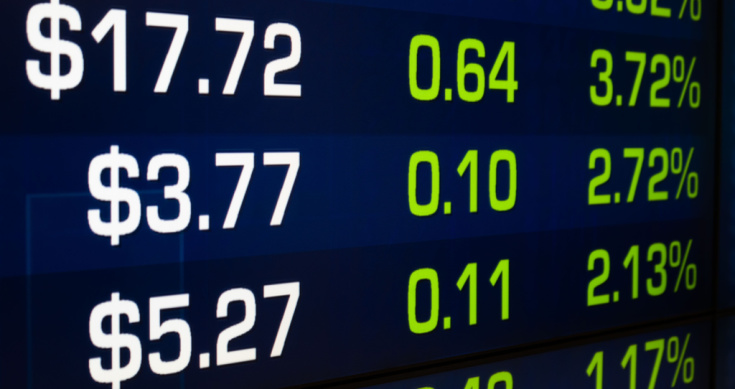ANZ have furiously been sending out letters to all their shareholders offering a priority entry into their latest capital raising offer, the ANZ Capital Notes 4.
This seems like a privilege and a generous offer because the capital note is at higher return than the current term deposit (TDs) rate, but those in the know look at this to be another ticking time-bomb.
The range of hybrids out there all have one thing in common; slightly better yields than term-deposit interest rates. But they are not TDs, or even a justifiable comparison when you compare risk and return. So why are they sold as if they were a reasonable comparison?
“Let’s get one thing straight – hybrids are not fixed income (bonds).” Says Richard Murphy at XTBs
Most investors have become accustomed to Hybrids and capital notes from the banks. The massive number of these offerings that Australian investors have received over the last decade has brought about an unjustified level of acceptance and complacency.
Until recently the ASX allowed companies to call hybrids ‘listed debt’, ‘listed fixed income’ and other similar terms. But ASIC and ASX got together in 2015 and finally banned all companies from using such misleading language.
Thin Ice
But after ten plus years’ of misinformation about hybrids versus TD it’s no wonder may investors think they’re next to each other in risk and return terms. It’s seems like a no-brainer; take the expiring TD and lend it back to the bank – but at a higher rate! Bingo!
We all feel like geniuses, but we’re missing something very fundamental. We compromised our solid footing in the TD and walked onto a frozen lake to get the Hybrid.

Nobody thinks the major banks will collapse so the frozen lake will probably hold us, but the point is; we’re not certain. Just like getting our money back from the Hybrid – no one really knows for sure exactly when that money is coming back (if ever).
The true danger of hybrids isn’t that banks may imminently collapse. It’s the fluctuating probability that income will be deferred, or a capital trigger may be tripped, or the call date may have to be deferred by APRA and instead of being paid back in 5 years, it’s now 10+ years away.
Those risks are real and the day to day consequence for investors of that fluctuating probability is manifest in the high degree of price volatility you get with hybrids. $100 in the bank remains $100. Hybrids can, and do drop to 90 and even 80 cents in the dollar when equity market certainty is present. These are facts. This does happen. And unlike TD and true bonds like government and senior corporate bonds, there is nothing to stop this volatility if the bank’s equity becomes stressed.
Feed the Ducks
Hybrids are there in the good times, but flaky, non-committal and vague in times of despair.
When all is well in the economy the hybrids work fine, and so does the portfolio of shares too – that’s no coincidence by the way. In fact in the good times, hybrids perform like bonds as they did in the boom years 2004 to 2007 before the GFC (but wouldn’t we have been better off with shares?)
In fact, in good times we’d wished we bought more shares and hybrids – and we do, just like when ANZ sends out the special invitation for shareholders to buy more of such a great thing.
Is anyone else reminded of the old saying “Feed the ducks while they’re quacking” – although I’m certain that ANZ isn’t the duck in this scenario…
Fair-weather Friend
Hybrids will provide better returns than a TD when times are good. This is because in good times, they’re not needed as a buffer to protect the banks, so they just truck along looking like a bond. But what about when times aren’t so good?
First let’s see what we’re comparing here:
Capital return certainty:
- A TD will return us our capital without any dispute, question or uncertainty. Same deal for government and senior corporate bonds if those issuers don’t collapse.
- Depending on the terms of the Hybrid, the ‘call date’, which is not a firm maturity date, can be deferred to some other date way down the road. And at worst, the bank or APRA may convert the hybrids and so you might end up holding some shares, but at the worst possible time – when the shares have tanked.
Price Variation:
- A TD can be exited if we forego some interest, but we’ll get our capital back
- Recent history shows that hybrids ride the waves of the share market
“That is in fact their job! As the APRA chairman said in a speech in late August 2016 – hybrids are the first line of defence for the banking sector – they are not an alternative for your TDs.” Says Murphy
- You’ll want to have your crystal ball ready if you want your capital back before the “expiry” of that hybrid.
“And by expiry, we mean – whenever they decide to pay it back assuming APRA lets them.” Explains Murphy.
“APRA can stop the banks paying you back if they’re worried about the banking system around the time of the call date. It’s a call date because they’re all going to make a call about whether to pay you back. And if you think APRA cares about a few ducks standing on the melting ice, then think again. APRA is mandated to protect the financial system, and a few ducks taking a hit on their hybrids isn’t as bad as a bank or two getting into trouble. Your fellow Australians will thank you for taking one for the team.” Says Murphy.
Risk:
- For a TD, if the proverbial hits the fan, the Australian Government will step in and use the Government Guarantee to help out smaller investors.
- For a Hybrid there is no Government Guarantee. The hybrid-holder will have been taken for a ride in the waves of the share market and will have wiped out, most likely being left holding some bank-shares that are plummeting in value.
Hybrid Cannon-Fodder
“Hybrids sit between fixed income and equity.” Says Murphy.
Each hybrid is different to the next. One might be a bit more like shares while another is more like a TDs or bonds. All of the new hybrids are more like equities. In the end, all hybrid volatility is driven by their equity-like features.
“Hybrids are designed to protect banks, not your portfolio. Hybrids are a buffer in front of the banking system train” Says Murphy.
“Some of the more debt-like hybrids that were more defensive for you, have now been banned by APRA because they were not defensive enough for banks. APRA wants hybrids that are easily deferrable or convertible for banks, which automatically means they need to be more risky for you.” Continues Murphy.
“The new style of hybrids are far more suited to playing their actual role in a crisis – which is to fall in front of the train to protect the rest of us.” Says Murphy.
When looking at Hybrids, some commentators see Hybrids as the Government Guarantee. This is in the context of:
- New global regulations have forced APRA to change the rules around Hybrids in favour of the banks,
- This includes increased capital requirements of the banks (Basel III etc.)
- The relentless offerings of new Hybrids and Capital Notes.
“When considering both sides of this coin most investors stop comparing Hybrids to TDs and start thinking of hybrids as a risky instrument that should be compared with equities. Real bonds sit in between hybrids and TDs and bonds are the next cabs off the rank after TDs in risk-return terms – not hybrids.” Says Murphy
With a better understanding of where Hybrid sit on the risk curve, investors start questioning whether they would swap their Ramsay, Aristocrat, Domino’s Pizza or even ANZ Bank shares for a Hybrid – and that is exactly what ANZ shareholders are asking right now: “Would I swap my ANZ shares for ANZ Capital Notes?”
“If you fully understand all the risks and what the structure is, then yes it’s reasonable for you to assess the risks of hybrids versus shares in the same company. But if you think you’re looking at an investment that’s a fixed income alternative to your TD, then that quacking noise in your head may just be you. Don’t be the wood duck. See these instruments for what they are and be aware of the actual risks. Safe investing.” Says Richard Murphy at XTBs.









